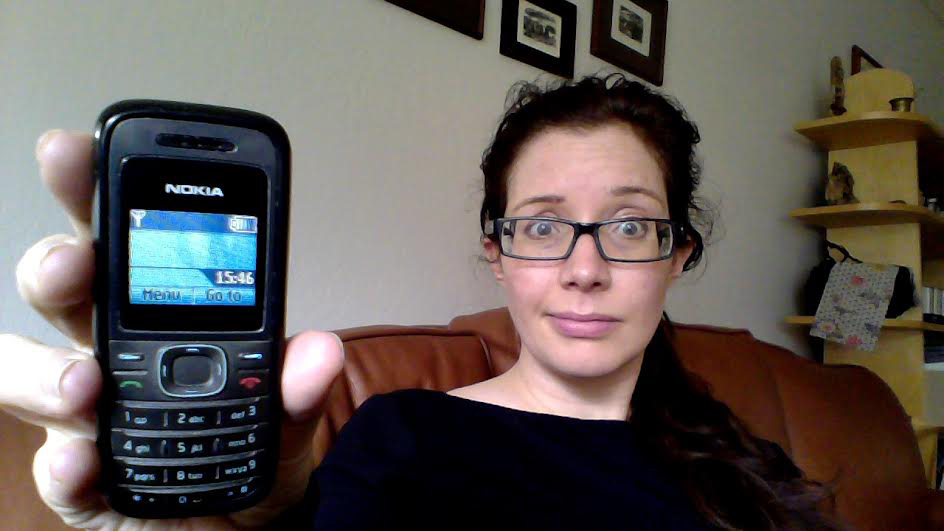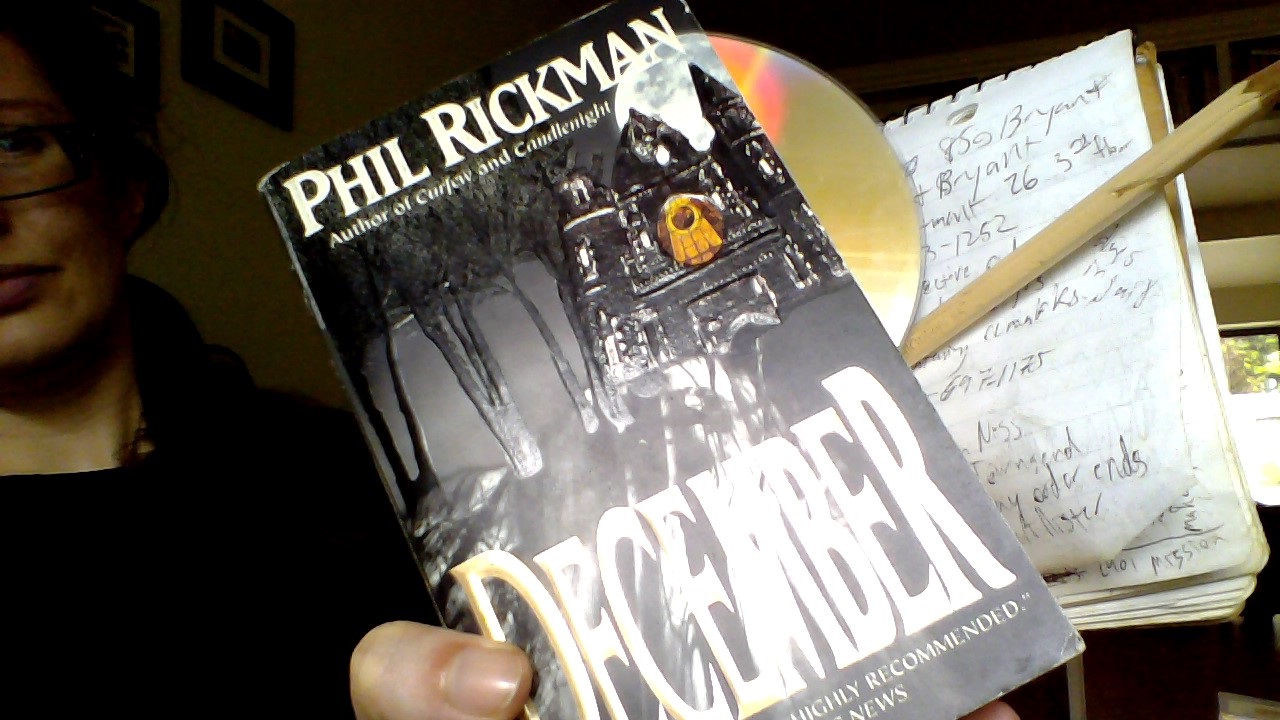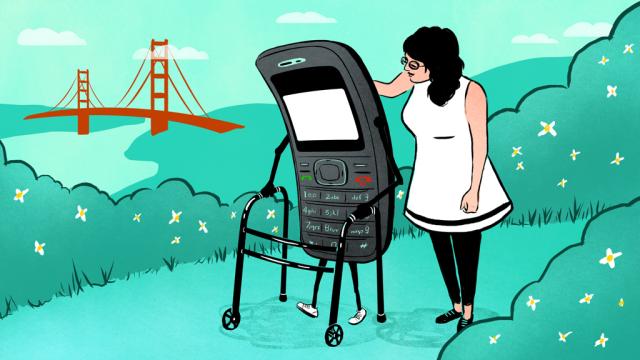I live in the world’s most famous tech city, surrounded by the most advanced personal electronic devices. None of them, however, grab quite as much attention as my own phone does.
My phone was already old-fashioned when I bought it eight years ago, and by now, even a drug dealer would be embarrassed to own it. This has many consequences — most of them superficial, some of them downright worrying.
I Hide My Phone, But Not For The Reason You Think
I bought my very first cell phone in 2007. It’s officially a Nokia 1208, but colloquially it’s what people refer to as a “candy bar phone.” It doesn’t flip. It doesn’t slide. Its screen is one-and-a-quarter inches wide and the only colours it shows are black, white, and variations of blue. It doesn’t even send texts, though it can receive them.
In the past, I’ve thought about asking tech-savvy people if they can fix the texts, but at this point, I try not to show it to people. Especially when I’m in a group.
Nobody has ever made fun of me because of my phone. At most, people ask tactful questions that amount to, “Are you desperately, desperately poor or something?” The problem isn’t ridicule. It’s that the moment anyone sees my phone, like when I absentmindedly take it out of my pocket to check the time, it becomes the center of attention. People gather around me, peering at it and asking me, shyly, if they can “see it for a second.” They hold it on their upturned palm and sort of jiggle it to gauge the weight. They exclaim over the fact that its keypad is made of one single piece of rubberised plastic. They peer at its little screen. Then come the questions.
“I bet you can just put it back together after you drop it.”
Yes, I can.
“How much did you pay for this?”
I think it was about seventeen dollars in 2007.
“Does it do anything?”
It has an alarm clock and a timer, and when you press the little button in the center it becomes a flashlight.

That last one always gets a laugh. Then the phone gets passed to the next person. This can go on for half an hour. I guess I could ask someone, during these sessions, about setting the phone up so I can text, but . . .
It’s Way More Convenient Than An iPhone
I suspect that the reason I can’t use this phone to send texts is simply because it’s not part of my plan. My plan involves going into a store every five months or so, when my allotted minutes get low, and handing a hundred dollars to the person in the textured polo shirt. That sets me up for another five months. The most disagreeable overcharge I’ve ever had to pay happened when I was visiting Washington DC. They have a twelve per cent tax on re-filling your phone — but that soured me on my country more than it soured me on my phone.
I don’t worry about dropping my phone, because there’s nothing on it I can’t fix by jamming it back into place with my thumb. I don’t worry about anyone stealing my phone, because the phone is not worth the effort it would take to run away from me after snatching it, and any thief in San Francisco can see that. The most I have to worry about is dropping my phone in a pool, because I don’t know which would be more expensive: buying a new phone or buying a bag of rice to suck out the water.
I won’t deny that the features on new phones are nice, but I will deny that they’re necessary. Once, a couple of years ago, a friend and I were lost in the Presidio at night. My friend used the GPS on her phone to guide us to our destination more quickly. About once every three months, I get turned around when I’m on a walk and it would be nice to look at a map to help me find my way. Sometimes I forget if a business is open on a holiday and wish I could quickly check their website before I hike a block out of my way.

Most of the time, though, stuff just works out. If I really need to find an address or contact a business, I call Information the way everyone always used to before phones became computers. If someone texts me, I call them back. If I think they’re driving and can’t pick up the phone, I just wait. This has never not worked — and it almost always works within twenty minutes.
In fact, if you want to do a little experiment, spend one month keeping a tally of how many of the phone calls or text conversations around you amount to people confirming that they definitely will meet up with each other at the place they already agreed they were going to meet up with each other, within twenty minutes of the time they agreed that they were going to meet up with each other. You’ll come out of that month with a new respect for passivity. Seriously, people, it’s fine. They will be here when they get here.
But You Do Have to Plan Ahead
I will admit one thing, though — people with smart phones carry less stuff than I do. In addition to my little candy bar phone, I generally have at the very least a pad of paper and a pen or pencil. Flipping back through this pad will give you a running list of the addresses and phone numbers of the places where I was going to meet people, simple directions from a parking lot or bus station when I’m going to a place I’ve never been before, and the details of people I meet when I’m away from home. Interspersed with these will be ideas for articles, which I think up when everyone else is on their phone at the table (savages), or when I’m stuck on a train.

I’ll also almost always have a book with me. I wish this weren’t necessary. As a frequent public transportation user, and a relatively tall person in a relatively short city, I would love to spend my rides on BART and Muni reading people’s texts over their shoulders. Alas, I have done a decade of research on this, and I’ve come to the inescapable conclusion that people’s texts are boring. Furthermore, texting gives people boring, expressionless faces — although it does, thank god, stop people from talking on their cell phones while they’re on public transportation. Whatever you’re paying for your texts, it’s worth it for the wonderful hush that came over buses and trains when texting became more popular than talking. Still, when you’re not able to text, a book is mandatory.
The only times I truly wish I could use my phone as an entertainment device are on those rare occasions when I drive. I’ve seen a lot of hype about what the tech industry is doing to newspapers, to books, to television, and to movies — but I haven’t read much about the devastation it is wreaking on radio stations. Drive anywhere without your phone playing music for you and you’ll pick up nothing but barely-powered radio stations with “listen at work” playlists and ads for mattress stores that are having going-out-of-business sales. It is grim in radioland, people. If you can’t get your hands on a phone for car trips, dig some ancient CDs out of your closet. Or just stay home.
Technology Isn’t a Culture, It’s a Language, and I’m Losing Fluency
Some of you will think I sound smug, talking about how little I need an expensive phone and how little of a difference its fancy features actually make. You’re right — but that’s only half of the story. The other half of the story is what occasionally keeps me up at night.
Do you know how to use an iPhone? I don’t.
“That’s silly,” you think. “Four-year-olds can use an iPhone. When I get a new iPhone, with all new features and a new design, I don’t glance at a manual or get instructions. I pick it up and use it. It’s designed to be completely intuitive.”
No, it isn’t. Speaking as an outsider, there’s nothing about technology, no matter how well-designed, that’s intuitive. I routinely turn people’s iPhones off when they ask me to take pictures of them, because I mistake the off button on the phone for the “take a picture” button on the screen. When people hand me their phones so I can add my name and number to their address books, I can’t do it, and they can’t understand why I can’t do it.
Yes, I know that anyone could teach me to do any one of these things in a few minutes, but that isn’t actually going to solve the problem. When I look at how people use phones, pads, and even televisions, I can see that they’re looking at various aspects of devices and getting information from those aspects. A line at the top of the screen, the placement of an icon on the left or on the right, a slightly different colour around a picture — it’s meaningless to me, but meaningful to them.

The idea is reinforced whenever I go online. When I read about how this company is reintroducing this design feature from 2013, or ripping off that design feature from another company, or refining a third feature that they introduced last year, I look at two seemingly identical screencaps of two seemingly identical screens and have no idea what information I’m supposed to be gleaning from it. While I’m baffled, the comment section below is going nuts about what it all means.
What this means to me is that everyone in my city is engaging with companies, popular ones like Apple and reviled ones like BlackBerry, and they are all, collectively, learning to speak Technology. Once people gain fluency in that language, even if they’re just consumers, they use the language to have new ideas, and organise the world in different ways. It’s getting to the point where I literally don’t have the vocabulary to understand how other people see, and interact with, the world.
Want an example? The last time I bought a television, the process for setting up a television was plugging the television into the wall and turning it on. When everyone was updating to “digital,” I moved my television into the closet (only to be exhumed whenever a DVD won’t play on my computer) and switched to watching Hulu. These days I know that there are boxes that attach to a television, and there are sticks that plug into a television, and there are companies you can call that will make your television let you watch shows, but I do not even have the words to ask people specifics about how to make a TV “go.”
So while my phone works just fine for me, I get the feeling that I need to hop over to some form of personal device soon. More importantly, I need to find some aspect of this new technology that I want to engage with. I need to find something that makes me want to play around with a screen (preferably something with a screen bigger than one-and-a-quarter inches). If I don’t, someday I’m going to be staring at a screen while people patiently explain things to me, not even realising that every word they say is as meaningless to me as if they were speaking Hungarian. I have to do something soon — before the language barrier gets too high.
Illustration by Tara Jacoby
